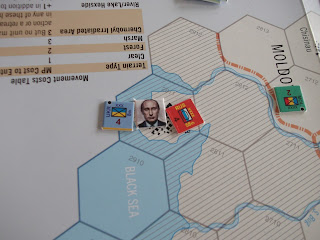The rise of Asia is almost a cliché in current futures work. But what happens if this assumption is wrong? The development of Asia has been a feature of the past half a century, but that spectacular rise has blinded us to the risks that this progress could first halt, and then reverse. A more nuanced approach to Asia would accept this possibility and embrace it. After all, the future is not pre-ordained and we cannot take anything for granted.
The author outlines the case against Asia. In many ways, the vulnerabilities of Asia have their origin in the success of Asia. The more successful the Asian economies become, the more likely their weaknesses will come into view. Professor Auslin identifies five key risk areas:
The author outlines the case against Asia. In many ways, the vulnerabilities of Asia have their origin in the success of Asia. The more successful the Asian economies become, the more likely their weaknesses will come into view. Professor Auslin identifies five key risk areas:
1. The risk of economic failure owing to crony capitalism and the misallocation of resources, especially investment resources. I found it helpful to divide the Indo-Pacific area into three risk categories - the sluggish (e.g. Japan), the soon to be sluggish (e.g. China), and the vibrant (e.g. Indonesia).
2. The demographic risk of growing old before growing rich. In this case, he usefully divides Asia into three risk categories - the old (e.g. Japan), the becoming old (e.g. China), and the young (e.g. Indonesia).
3. The risk associated with unfinished internal political reform. This risk is viewed as the extent to which the various nations have moved to become liberal-democracies. The range is from the 'democratic' (e.g. India) to the 'autarchic' (e.g. China).
4. The lack of a cohesive international political community. The question here is viewed in the negative - why is there no Asian equivalent of the EU? Why is there such a divergence of nations in Asia? Why is there a general lack of cohesion?
5. The risk of war. This is a recurring factor in the international politics of Asia. There are a number of border disputes, disputes over sovereignty, and historical grievances to keep this risk high in our thinking.
Each of these could, in itself, prove very disruptive to the wider international community, but together, they would have a significant effect upon global affairs.
It is fair to say that these risks are largely hidden from current analysis and ought to be given a higher profile. The recent events on the Korean peninsula demonstrate how fragile the current order could become. The author does make a number of suggestions to manage and reduce the risk in the area, but I found them largely unconvincing. His view appears to be that if the Asian nations were to be more like America, then it would be easier for America to guide the risk. That's almost a truism, but it does not account for a situation where the United States is, itself, a dysfunctional risk factor.
The book was written prior to President Trump's inauguration. It is almost out of date before being published. The author presumes the continued certainty of American policy towards Asia, and did not account for the possibility of a complete change in policy. For example, he takes for granted the passage of the Trans-Pacific Partnership. I agree with him that this would have been a key element in shaping Asia in the image which suited America. However, by making this assumption, the book does not consider the possibility of the US surrendering the strategic initiative to China. It does not give space to America's Asian allies wondering how reliable their security guarantee might be. It does not alert us to the possibility that the risk in Asia might be increased through the effects of American policy.
The book does, however, give us a framework to view events in Asia and a model by which we can assess how risk increases and decreases. The issue of North Korea is dominating our current thinking, but there are all sorts of unresolved disputes over the sovereignty of various rocks, islands, and reefs that could suddenly become volatile. This could be exacerbated by the twin forces of ethnic conflicts and nationalism, which overlay various historical grievances. Just because the past 50 years have been relatively conflict free does not mean that we can assume that the next 50 years will be conflict free as well.
The book is a useful corrective to a blindspot in our current thinking. The analysis of the causes has much to commend it, as does the analytical framework to interpret events and the model by which risk can be assessed. The prescriptions leave a lot to be desired, but at least we have a vocabulary by which we can discuss the various options.
Stephen Aguilar-Millan
© The European Futures Observatory 2017













